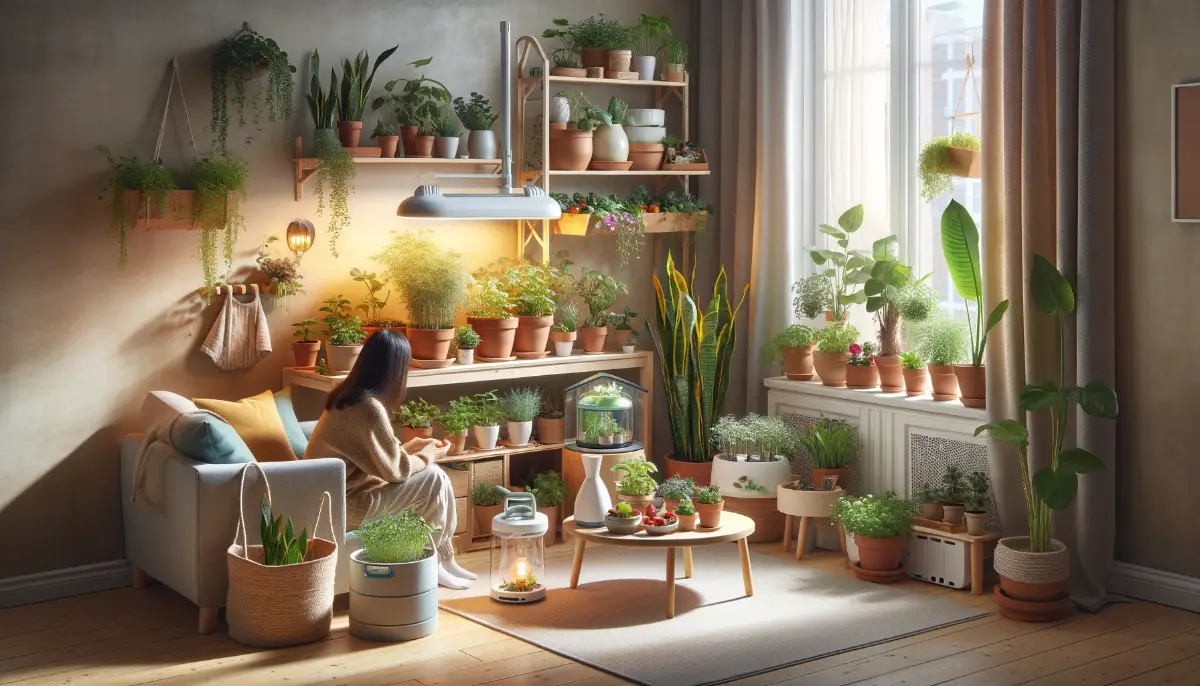Indoor gardening has gained popularity as people seek to bring a touch of nature into their homes. Whether you have a small apartment or a spacious house, creating an indoor garden can enhance your living space, improve air quality, and provide a sense of tranquility. This blog will explore the benefits of indoor gardening, tips for getting started, and some fantastic plants to consider for your indoor oasis.
1. Benefits of Indoor Gardening
- Improves Air Quality: Indoor plants can help filter and purify the air, reducing toxins and increasing humidity. This can lead to better respiratory health and overall well-being.
- Enhances Mood and Reduces Stress: Being around plants has been shown to improve mood and reduce stress levels. Gardening can be a therapeutic activity, providing a sense of accomplishment and relaxation.
- Provides Fresh Produce: Growing your herbs, vegetables, or fruits indoors allows you to enjoy fresh produce year-round. This can enhance your meals and promote healthy eating habits.
2. Getting Started with Indoor Gardening
- Choose the Right Space: Select a spot in your home that receives adequate natural light. South-facing windows are ideal for many plants, but you can also use grow lights if natural light is limited.
- Select Appropriate Containers: Use pots with drainage holes to prevent overwatering. Consider the size and material of the containers, as they can affect moisture retention and plant growth.
- Use Quality Potting Mix: Invest in good potting soil designed for indoor plants. This will provide the necessary nutrients and proper drainage for healthy root growth.
- Water Wisely: Overwatering is a common mistake in indoor gardening. Check the moisture level in the soil before watering, and ensure that excess water can drain away.
3. Plants to Consider for Your Indoor Garden
- Herbs: Basil, cilantro, and mint are easy to grow indoors and can enhance your cooking. They thrive in sunny spots and can be harvested regularly.
- Succulents and Cacti: These low-maintenance plants are perfect for beginners. They require minimal watering and can thrive in bright light, adding a touch of greenery to your home.
- Pothos: Known for its trailing vines and heart-shaped leaves, pothos is an adaptable plant that can tolerate low light conditions. It’s also excellent for purifying the air.
- Spider Plant: This resilient plant is perfect for hanging baskets and can tolerate a range of conditions. It’s also known for its air-purifying qualities.
- Snake Plant: Known for its striking upright leaves, the snake plant is virtually indestructible and can thrive in low light and with minimal water. It’s an excellent choice for beginners.
4. Maintaining Your Indoor Garden
- Regularly Check for Pests: Keep an eye out for common indoor plant pests, such as spider mites and aphids. If you notice any, treat them promptly with insecticidal soap or neem oil.
- Prune and Fertilize: Regularly prune dead leaves and stems to encourage new growth. Fertilize your plants according to their specific needs, typically every few weeks during the growing season.
- Rotate Plants: Rotate your plants periodically to ensure even growth. This helps them receive equal exposure to light and prevents them from leaning towards the light source.
Conclusion
Indoor gardening is a rewarding hobby that can bring life to your home and enhance your well-being. By choosing the right plants and providing them with the care they need, you can create a thriving indoor garden that brings joy and beauty to your space. Whether you’re growing herbs for your kitchen or nurturing beautiful houseplants, indoor gardening allows you to cultivate a little piece of nature in your home.
What plants do you have in your indoor garden? Share your gardening experiences and tips in the comments below!

Leave a Reply